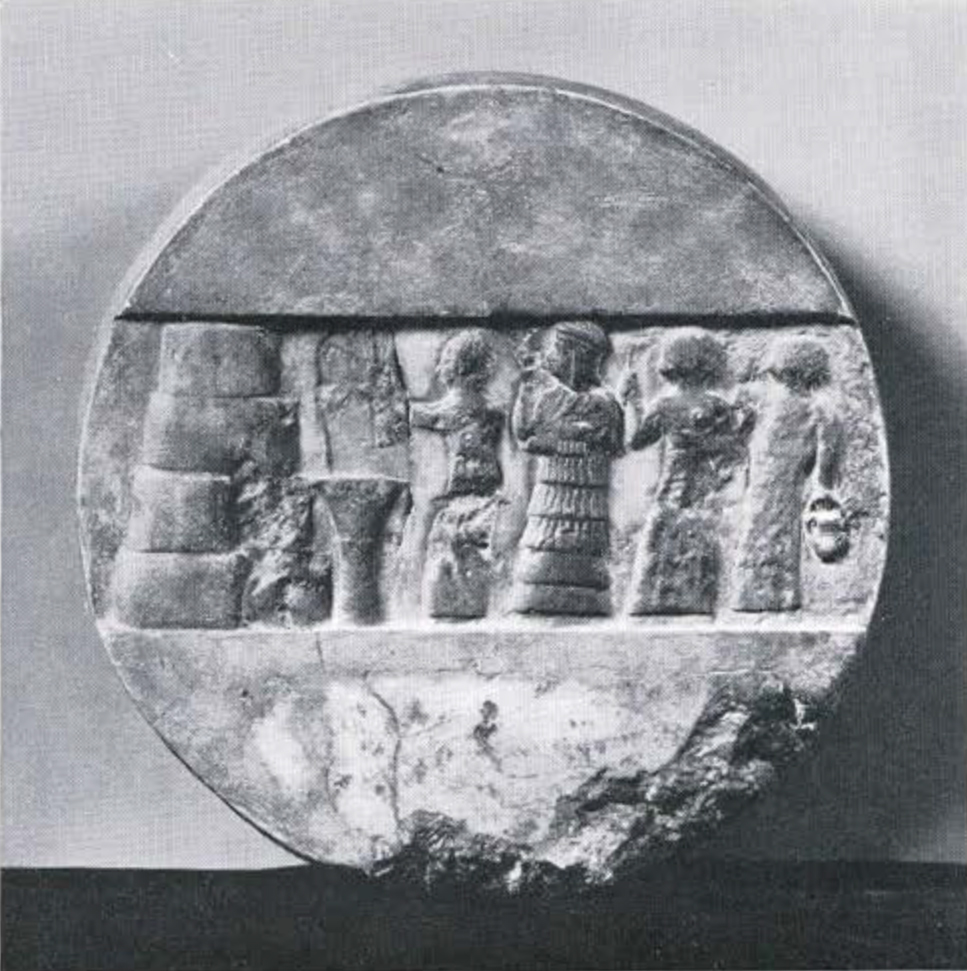The excavations of the last twenty years have thus revealed the origin and progress of a Sumerian culture in southern Mesopotamia after the middle of the fourth millennium B.C. It was flourishing at the beginning of the third millennium, and its influence extended far, over the Semitic populations of Upper Mesopotamia and to distant foreign lands east and west. Sargon of Agade was the first to challenge the political power of the Sumerian city states, about 2550 B.C.

Museum Object Number: B16665
Interesting monuments of Sargon and his successors are shown in the Babylonian Section of the University Museum. The legend of Sargon tells how he was exposed on the water-like the infant Moses-raised by a gardener, attached as cup-bearer to the service of a king of Kish, finally revolted and became the founder of a great empire with a new capital, Agade, after which his Semitic followers are named Akkadians. Sargon’s inscriptions are in Semitic Akkadian. Henceforth his title is “King of Sumer and Akkad, King of the Four Corners of the World,” a title claimed by his successors and by whatever Semitic or Sumerian ruler aspired to the empire. Sargon restored the temples and they received a good part of the spoils of war. Large square bricks of a new type, bearing his name, are found in all the reconstructions. Hard-baked clay stamps with characters in relief were used for printing. Long votive inscriptions in the same clear characters were engraved on the alabaster vases used in the temple ritual. The stone was imported from the conquered mountain regions. Heavy basalt blocks formed the door sockets of the great gate of the Enlil temple at Nippur. They are inscribed with the name of Shargani-sharri (cf. Figure 4), one of his successors, and may be seen now in the Babylonian Section of the University Museum, together with the alabaster vases of Rimush and the clay stamps and bricks of Naram-Sin.
A more artistic and historically interesting monument of the same time is a disk of alabaster (Figure 35) found at Ur in the courtyard of the goddess Ningal, wife of the moon-god. Round like the full moon, the disk has on its face a ritual scene in low relief, and an inscription on the back. It is a memorial of En-khe-du-an-na, daughter of Sargon, priestess and wife of the moon-god Nannar. With her begins a tradition of devoting a royal princess to the service of the great gods, which was to last until the days of Nabonidus, the last of the Chaldaean kings of Babylon. In her hands as high priestess were united religious and political authority. As wife of the god, to whom he revealed his secrets after a night spent in the empty shrine at the top of the Ziggurat, she appears in the role of prophetess. On the reliefs, she presides over a libation sacrifice performed by the shorn priest before an altar shaped like a staged tower. With both hands the priest holds by the foot a spouted jar, pouring the water over an hour-glass shaped vessel. The princess wears a long- sleeved, flounced tunic, her long hair hanging down her back and three braids resting on her breast. She raises one hand in sign of adoration, and she is attended by servants, one carrying a bucket, the other perhaps a whisk (Museum Journal, September, 1927, p. 239).

